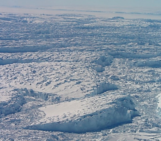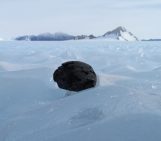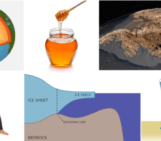
Fig 1. Schematic showing circulation over the Antarctic continental shelf. [Credit: Dinniman et al., 2016].
Ice shelves (the floating parts of the Antarctic ice sheet) play a fundamental role in the stability of the Antarctic ice sheet (see this post) and, therefore, its contribution to global sea-level rise. They lose mass primarily through melting at their bases, which are in contact with the ocean. This thins them and makes them more vulnerable, reducing their stabilising potential and causing more ice to flow from the land into the ocean. Thanks to direct sub-shelf melt measurements collected in 2016 on the Roi Baudouin Ice Shelf in Dronning Maud Land, East Antarctica, we were able to show that the bathymetry of the surrounding ocean has the potential to increase melting at the base of the Antarctic ice shelves.
What influences melt under the floating ice shelves?
Ocean circulation within sub-shelf cavities (see Fig. 1) is a key control of sub-shelf melting (also see this post). That circulation arises from the fact that ambient ocean water that circulates under the shelves leads to melting of the base of the ice shelf. Meltwater formed as a result of this has a lower density than the ambient ocean water (the ocean water immediately in and around the cavity). It will therefore rise along the shelf base, forming a buoyant plume that mixes with ocean water and ascends along the sloping ice shelf base. The upward motion of the created plume induces in turn an inflow of possibly warmer ocean water into the ice-shelf cavity, creating more melt. Therefore, the amount of sub-shelf melting largely depends on the intensity of the circulation induced in the sub-shelf cavity, which is influenced by the characteristics of the ocean water (temperature and salinity) as well as by the level of turbulence in the cavity.
Tidal currents can increase melting under the floating ice shelves in two different ways:
- They contribute to the mixing of the water column and modify the hydrographic characteristics of the water masses at the ice-ocean interface.
- They also greatly strengthen the turbulence at the ice-ocean interface.
In addition, tides can be enhanced by strong topographic slopes (such as seafloor ridges and banks), generating what we call “topographic waves”. However, around Antarctica, these topographic waves can only propagate if the water column is well-stratified (meaning water with different density properties separates into layers which prevent mixing), forming ‘internal waves’ or ‘internal tides’ (you could observe internal waves in your kitchen, when you tilt back and forth a tank with vinegar in the bottom and oil on the top, watch this video to see an example). These internal waves propagate horizontally along an interface where the density changes rapidly, and make their way to the ice shelf cavity, where they increase the sub-shelf melt by the processes explained above.
The case of the Roi Baudouin Ice Shelf

Fig 2. Overview of the study region. RBIS denotes Roi Baudouin Ice Shelf. RL denotes the Riiser-Larsen Peninsula. Ocean bathymetry (brown to green colours) is superimposed with tidal ellipses (black ellipses) which represent how the diurnal tidal currents vary in space. [Credit: S. Sun, modified from Sun et al., 2019].
Roi Baudouin Ice Shelf is located in Dronning Maud Land, East Antarctica (Fig 2). During 2016, a piece of equipment called an autonomous phase-sensitive radar system (ApRES) was installed on the ice shelf to record high resolution (hourly measurements with millimeter precision) direct measurements of sub-shelf melting. The melt rates measured throughout 2016 (shown in Fig 3) show significant seasonal variations:
- In summer, at the beginning of the year, melt rates were of high magnitude (about 3 times higher than in winter). They also showed diurnal variations.
- In winter, melt rates were very weak. Even the daily variations vanished.
- At the end of the year, when summer came back, melt rates gradually increased and the daily variations showed up again.

Fig 3. Variations in melt rates beneath Roi Baudouin Ice Shelf. The sub-shelf melting is much stronger in Antarctic summer, with a significant diurnal signal (pink box, Jan – May). [Credit: S. Sun, modified from Sun et al., 2019].
These daily and seasonal variations can be explained by the existence of internal waves triggered by both tides and ocean bathymetry. Tides display both semi-diurnal and diurnal variations, but only the diurnal tides are enhanced by the Gunnerus Bank, a sandbank located near the Roi Baudouin Ice Shelf. This thus triggers the formation of topographic waves, then internal waves, that amplify sub-shelf melting, explaining the diurnal variations in melt rates. The fact that high melt rates displaying these diurnal variations are only observed in summer can, in turn, be explained by the seasonal variation of the stratification in the water column: in summer, the melting of sea ice promotes the stratification of the water column (internal waves can form and propagate), while in winter, the water column is well mixed by the brine rejections of the sea ice (topographic waves remain trapped at the Gunnerus Bank).
In conclusion, open-ocean bathymetry, tides and sea ice formation all play a key role in controlling the melt beneath the Antarctic ice shelves. This processes may also be important for controlling the melt rate response of Antarctic ice shelves to future climate change, as observations and models suggest an ongoing freshening of Antarctic surface water. Indeed, if surface water freshens, the water column will become well-stratified and topographic waves will be able to penetrate into the cavity and eventually strengthen the sub-shelf melting…
Further Reading
- S., Sun, Hattermann, T., Pattyn, F., Nicholls, K. W., Drews, R., & Berger, S. ( 2019). Topographic shelf waves control seasonal melting near Antarctic ice shelf grounding lines. Geophysical Research Letters, 46, 9824– 9832. https://doi.org/10.1029/2019GL083881
- Padman, L., M. R. Siegfried, and H. A. Fricker (2018), Ocean tide influences on the Antarctic and Greenland ice sheets, Reviews of Geophysics, 56, 142–184, doi:10.1002/2016RG000546.
- Jourdain, N. C., J. Molines, J. Le Sommer, P. Mathiot, J. Chanut, C. de Lavergne, and G. Madec (2019), Simulating or prescribing the influence of tides on the Amundsen Sea ice shelves, Ocean Modelling, 133, 44–55, doi:10.1016/j.ocemod.2018.11.001
- Dinniman, M.S., X.S. Asay-Davis, B.K. Galton-Fenzi, P.R. Holland, A. Jenkins, and R. Timmermann. 2016. Modeling ice shelf/ocean interaction in Antarctica: A review. Oceanography 29(4):144–153, https://doi.org/10.5670/oceanog.2016.106.
Edited by Jenny Arthur and Violaine Coulon
 Sainan Sun does her postdoctoral research with Frank Pattyn at Université Libre de Bruxelles (ULB). She achieved her doctoral degree in 2014, majoring in ice sheet modeling at Beijing Normal University, Beijing, China. For the project at ULB, she aims to investigate the ice shelf features based on data acquired in Roi Baudouin ice shelf, Antarctica, and to estimate the potential instability of the Antarctic ice sheet using the f.ETISh ice sheet model. Contact Email: sainsun@ulb.ac.be
Sainan Sun does her postdoctoral research with Frank Pattyn at Université Libre de Bruxelles (ULB). She achieved her doctoral degree in 2014, majoring in ice sheet modeling at Beijing Normal University, Beijing, China. For the project at ULB, she aims to investigate the ice shelf features based on data acquired in Roi Baudouin ice shelf, Antarctica, and to estimate the potential instability of the Antarctic ice sheet using the f.ETISh ice sheet model. Contact Email: sainsun@ulb.ac.be




